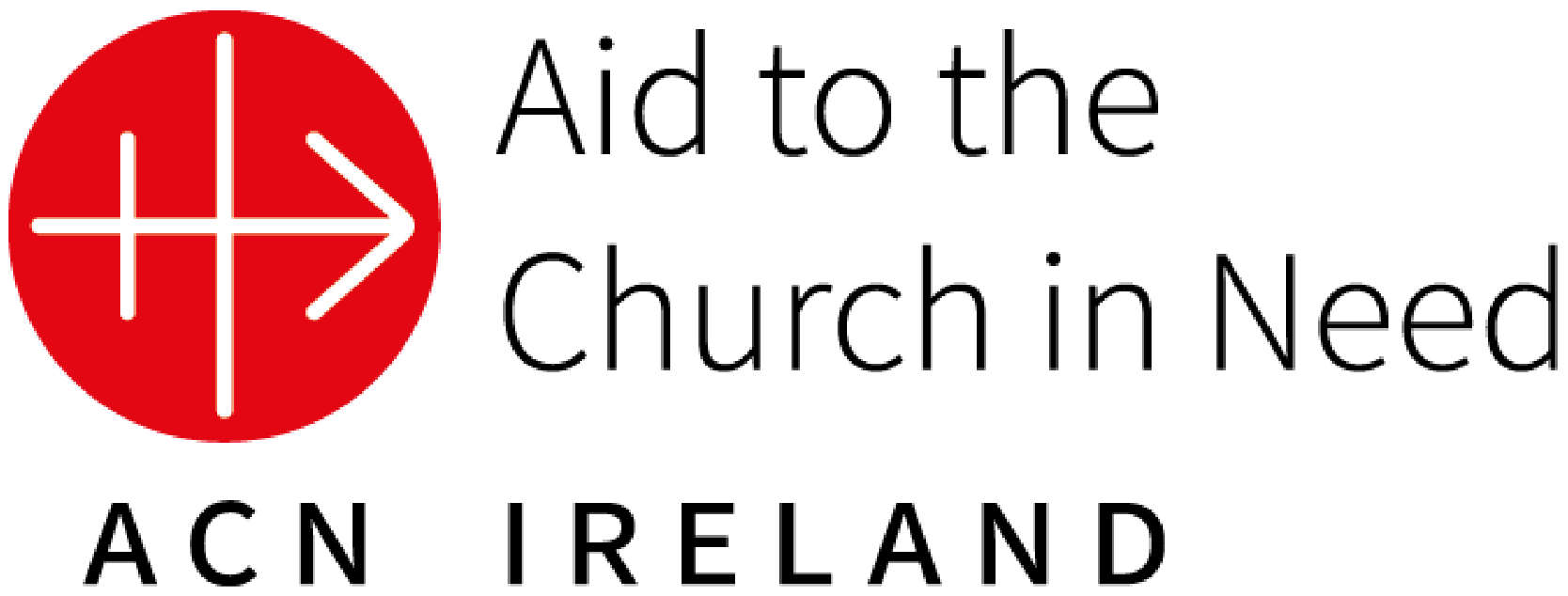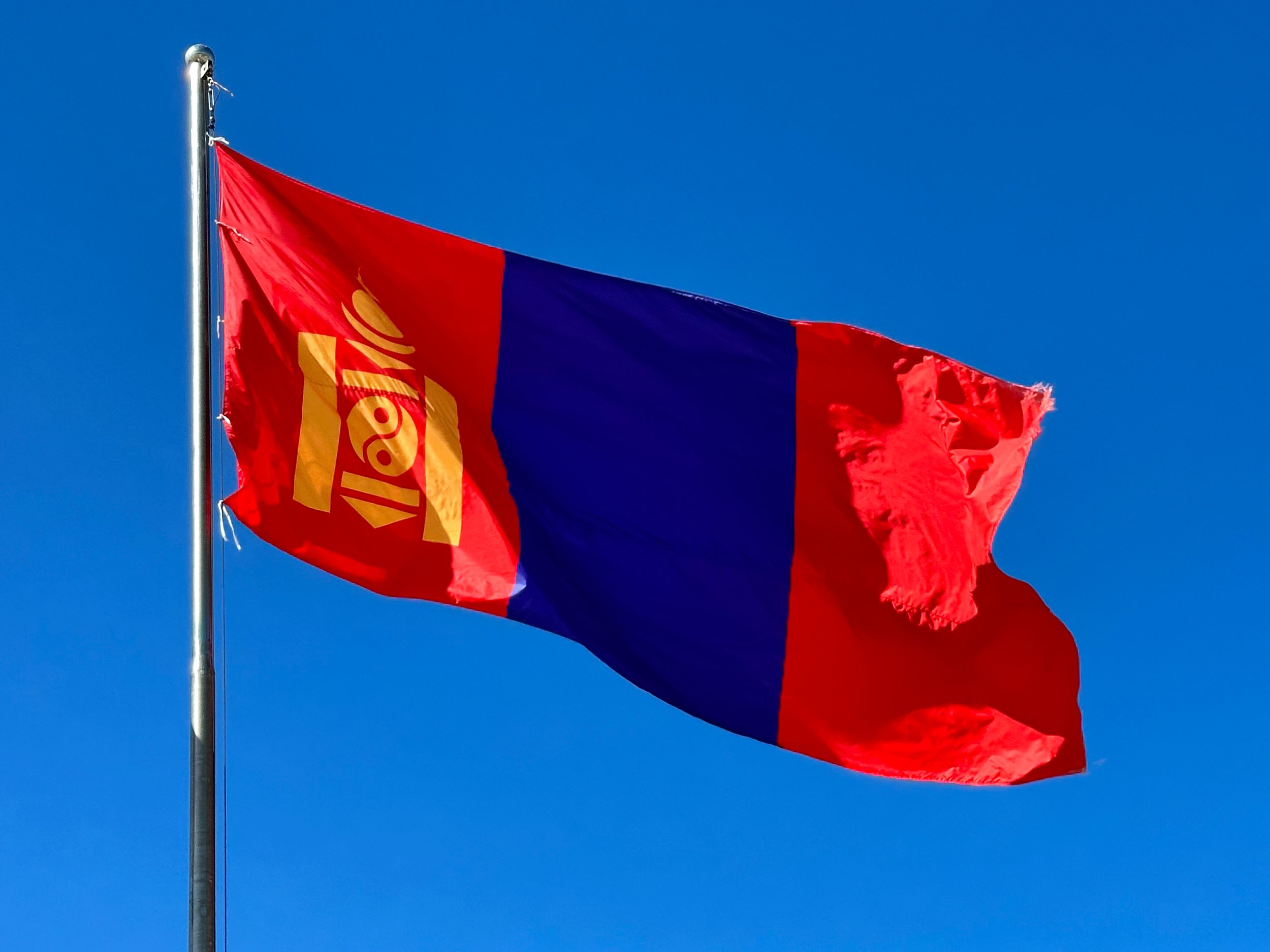Historic visit of Pope Francis to Mongolia
Pope Francis will visit Mongolia from 1 to 4 September. This historic first papal visit to Mongolia holds special importance for the country’s tiny Catholic minority.
By Filipe d’Avillez & Maria Lozano
The Mongolian Flag. (Credit: Aid to the Church in Need)
With his trip to the East Asian country in early September, the Holy Father stays true once again to his motto of going “to the peripheries”. Christians in Mongolia are not even 2% of the total population, around 62,000 people, only a small proportion of which are Catholic. Around 58% of the 3.2 million inhabitants profess Buddhism, and 5% are Muslims.
Graffiti welcoming Pope Francis painted next to the Sts. Peter and Paul Cathedral. (Credit: Aid to the Church in Need)
According to Vatican figures, Catholics in Mongolia number under 1,500 people, but the small community awaits the first papal visit to the country with great enthusiasm.
“I am very excited to see the Pope in Mongolia, and I believe that it will bring hope and enthusiasm for the Church, but also for the people who are not Christians. Mongolia is a Buddhist dominated country, so the Pope’s visit will also help our interreligious dialogue to be more friendly and fruitful. He will meet with Mongolian Buddhist monks, and also with other religious leaders, so it will be really helpful for our community and for dialogue” Cecilia Munkhzul Zoljargal , head of Media and Communication at the Apostolic Prefecture in Ulaanbaatar, told Aid to the Church in Need (ACN).
In contrast to its large neighbour China, Mongolia enjoys extensive freedom of religion. However, challenges raised by rapid economic and social changes have made some local authorities wary of religions, hence the importance of the visit in this context.
The interior of the Sts. Peter and Paul Cathedral, Ulaanbaatar. (Credit: Aid to the Church in Need)
ACN has supported small projects in Mongolia in the past, including the provision of Mass stipends for priests, general repairs for the cathedral of Sts Peter and Paul in the capital Ulaanbaatar and, more recently, in 2020, the purchase of a new car for one of the congregations working in the country. The charity is also supporting the local Church with some projects to make possible Pope Francis’ historic forthcoming visit to the East Asian country.
“Mongolian Catholics need the Pope’s visit for visibility and international support, because for many years nobody has even thought about their existence. Missionaries started from scratch in a wild steppe, all alone, and put in a lot of effort to build a community of Catholic Mongolians, which deserves attention”, says Peter Humeniuk, head of ACN projects for Central Asia.
“In recent weeks we have been in contact with Bishop Giorgio Marengo, the Apostolic Prefect of Ulaanbaatar, to discuss ways in which we can deepen support for the country’s Catholic Church in the short term”, he said.
Humeniuk will be travelling to the country together with Maria Lozano, director of the international press office for ACN, to accompany the local Church during the historical papal visit.
Cardinal Giorgio Marengo (the Apostolic Prefect of Ulaanbaatar) with Peter Humeniuk (Head of Central Asia at ACN International). (Credit: Aid to the Church in Need)
“I think the Pope’s visit is important for the whole region. Strategically located between Russia and China, Mongolia is a neutral territory. Buddhists in Mongolia are peaceful and open to dialogue with the Vatican, whereas the Mongolian government follows social democracy, which does not create any obstacles. The country has the potential to become an important partner for the Holy See in east and central Asia and an example for other Asian countries”, says Lozano.
“It is also an encouragement and a sign of affection for the Central Asian Bishops' Conference, which brings together Catholics from all the former Soviet countries of the region: Kazakhstan, Uzbekistan, Kyrgyzstan, Turkmenistan, and Tajikistan... These are minority Churches, and the Pope follows a leitmotif of giving prominence to minorities who, in their smallness, also give life and light to the universal Church”, Humeniuk adds.
“Just as the Holy Father wants to go to the peripheries, our foundation also wants to serve Christians in the peripheral areas. Dedicating our attention to our brothers and sisters in these countries – where they are a small flock – is one of the priorities of my section”, he states.




